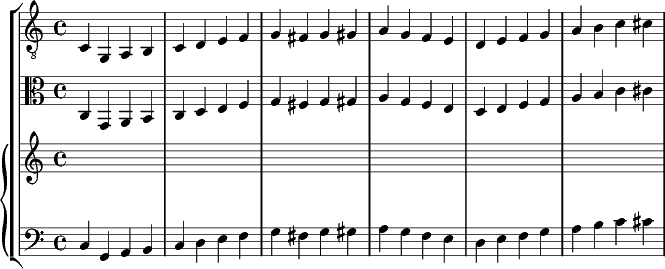Theory Project 5: Writing Sharps, Flats, and Naturals
David Raleigh Arnold
Sharps and Flats are Chromatic Signs

Accidentals Temporarily Change the Note
The sharp ♯ placed before a note on that note’s line or space raises its pitch ½ step. The pitch remains raised for that particular note in that particular voice until a bar or another accidental is encountered. Then the note reverts to its original pitch.
On a piano the note is raised to the pitch of the next higher key, which is probably black. b♯ is played as c’ and e♯ is played as f.
On a guitar the sharp raises the note to the pitch of the next higher fret. A note on the third fret, for example, is raised to the fourth.
On most instruments the sharp is the next available pitch above the natural pitch.
A natural sign ♮ placed before a note restores or changes it to its natural pitch.
A flat ♭ placed before a note lowers it ½ step just as the sharp raises it.
The good news is that accidentals are not cumulative. The bad news is that there are more rules, and two more chromatic signs, but not today.
(todo: ref?)
Ex. 1. Writing Sharps, Flats, and Naturals.
All of the naturals here are unnecessary reminders. Write them anyway. There is nothing wrong with reminders.
The accidental must be before the note, on the same line or space, no matter what. For example a g♯ “g-sharp” is written on the staff with the sharp directly in front of the note head and very close to it, and never after, above, or below to any extent. See measure 3 above.
The accidental is in force until a bar, so you ought not to write a second accidental before the same pitch when it is repeated in the measure. It would be a good idea to locate such notes before you start. For instance, you see a g♯ in the 8th measure on the first beat and another on the 4th. In the music, you ought not to write a ♯ before the second g. It’s already sharp. Reminders are not in the same measure except when there is more than one voice involved.
c4 g, a, b, | c d e f | g f♯ g g♯ | a g♮ f♮ e | d e f g | a b c' c♯' | d' c♮' b a | g♯ e f♯ g♯ | a e' c' b | a♯ g♮ f♯ e | d f♯ e d | c♯ e d c♯ | b, f♯' d' c♯' | b♯ a g♯ f♯ | e g♯ f♯ e | d♯ f♯ e d | c♯ e d♮ c♯ | d♮ e, f♯, g♯, | a, b, c d | e f♯ g♯ a | g♮ b♭ a g | f♮ e d c♯ | d e f g | a b♮ c♯' d' | c♮' e♭' d' c' | b♭ a g f♯ | g b♭ a♭ g | f♮ a♭ g f | e♭ f g a♭ | b♭ c' d' e♭' | d' f' e♭' d' | c' e♭' d' c' | b♮ d' b a♭ | f d b, a♭, | g, a♮, b, c | d e f d | c d e f | g a b c' | d' f' d' b | g f d b, | c2 r ||
Just in case you are curious, this music came from page 13 of the Carcassi Method. Here is The completed exercise to check your work.
[Home] [Up]